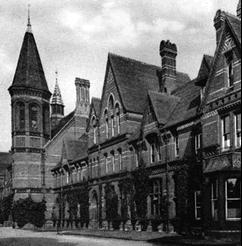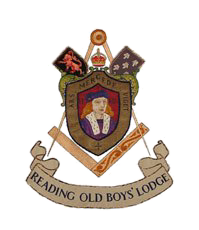A Short History of Reading School
(taken from Reading School website)
Its Foundation
On June 18th 1121 a delegation of eight monks from Cluny, France, arrived in Reading to begin preparations for the foundation of a new Abbey. On April 15th 1123, the first Abbot was appointed to oversee its construction, and the Foundation Charter was signed at Rouen two years later. It is the date of this Charter, 29 March 1125, that has been taken as the date for the foundation of Reading School. The School is proud to find its roots in the educational activities of the Abbey, which make Reading School the 10th oldest school in England.
Royal Patronage
Reading School has several times benefited from royal patronage. For King Henry III, the School was the ideal choice for a royal ward. His namesake, Henry VII, was enthusiastic about the Abbot's plans to convert the School into a Free Grammar School in 1486, and granted him a ten pound annual stipend. The same was granted by his son Henry VIII in Letters Patent issued in 1541. The seizure of Church lands and the dissolution of the monasteries in 1539 had left Reading School in the hands of the Corporation of Reading, which refused to pay the Master of the School. It was Henry's love of learning that moved him to be one of the School's most important benefactors.
Another important benefactor was Henry's daughter, Elizabeth I, who was more than willing to honour the commitment to her father. The Queen granted Reading one of its most important charters on 23rd February 1560. The charter contained 62 clauses, two of which dealt with Reading School. They made the Corporation liable for the Master's salary and gave it the power to appoint him. This charter governed the School for the next three hundred years.
The Plague and Civil War
Less than a hundred years after Elizabeth's charter was granted, the country was struck by the plague. By 1625, the government had moved from London to Reading, and the School became the Court of Augmentations, giving the pupils an extra holiday. They had another extended break in 1642, when a Royalist army captured the town during the Civil War. A garrison commanded by Sir Arthur Aston prepared for a siege, and commandeered the schoolroom for use as arsenal and powder-magazine. Reading School, it seems, has always taken the sign of royalty, wise as to on which side its bread is buttered.
The School in the 18th and 19th Centuries
The School prospered in the eighteenth century under the leadership of its Master, R Valpy. 
In 1867 the School rose again; the Reading School Act was passed. This legislation laid out, in 52 clauses, how a modern grammar school should be administered and funded. The new trustees of the School met to decide on a new site, and selected Erleigh Road, where the School remains today. Alfred Waterhouse, the architect who designed Manchester Town Hall and the Natural History Museum, was commissioned, and Queen Victoria was asked to become the School's patron. Unfortunately the queen declined, but the Prince of Wales agreed to lay the foundation stone. He did so in full Masonic regalia. Reading School was back in business.
